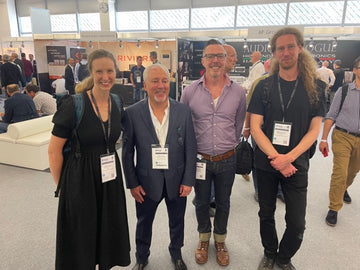You can’t throw a rock in the store without hitting a device with an Ethernet socket. Or a wireless antenna. Or a USB port. Not that Rab lets me throw rocks inside. I just do it when he’s not looking. Convergence it seems isn’t happening, its happened.
Most systems we sell these days will have at least one component that will interact with a computer. It may be as simple as an iPod dock that you’ve had to load the music via PC or a PVR with a software update you can download via USB; or it can be as complex as a Squeezebox which needs some client software running on your PC. Most of this hinges on a much misunderstood piece of the home, your network.
Its not just a box or a thing, the network the thing that lets all these devices speak. A lot of people confuse a network with the internet but you can have a network without an internet connection and you can connect to the internet without a network. A network is a way for all the computers to talk to one another. It usually a connection via the ubiquitous blue data cable or these days more commonly wireless connections. But networking doesn’t end with just plugging the devices together (our installers wish it did), but by configuring the devices to talk to one another.
Configuring devices to talk to one another can be an exercise in hair pulling frustration. Its gotten a lot simpler over the years, with advents like DHCP (you don’t need to know what it does, its just good ok.) and much better software taking away much of the hardship. Indeed it is now considered an end user activity, and most computer users can setup a basic network and get their computer talking to the internet.
But computers aren’t the only devices that connect to the network. So many devices, from a network media streamer, a games console, your phone and even modern AV receivers are all trying to join the network and share the love. IT for AV as I like to call it can be quite complex, especially when it comes to wireless. A lot of these devices support different levels of wireless encryption, meaning you have to lower network security for the devices to work. And even then, some devices still refuse to talk properly and the onboard software has no way of diagnosing the fault other than an oh so annoying ‘Can’t connect’ error message.
So as networking becomes more complex, I found myself wondering where to find a specialist on IT for AV. Eventually I realised, That’s us. We don’t like touching your computer to make your hifi work, but more and more its becoming par for the course. So if your buying a hifi for us and we start interrogating you as to your network setup, now you know why. But please don’t expect us to setup your network printer.
Opinions





